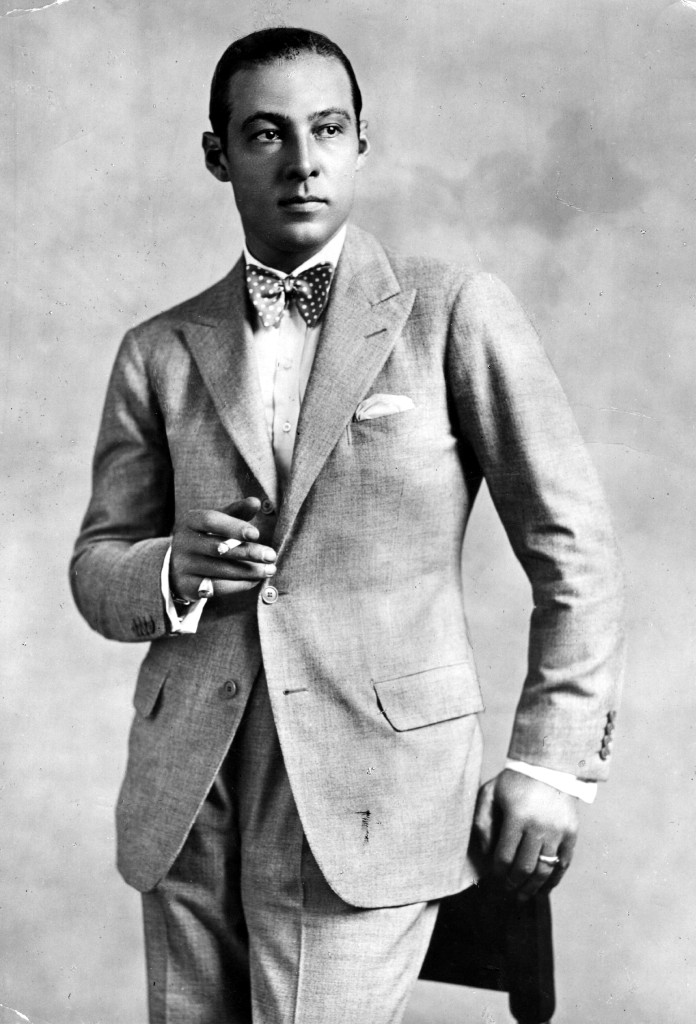Hollywood’s “Latin Lover” of the 1920s.
By Taylor Neumann, ReMIND Magazine
Rudolph Valentino was born Rodolfo Alfonzo Raffaelo Pietro Filiberto Guglielmi di Valentina d’Antonguolla in Italy in 1895. He reportedly was a spoiled child because of his looks and easy personality but did badly in school. He immigrated to the United States via Ellis Island in 1913 and, being unable to find steady work in New York, moved to Hollywood.
Valentino found himself in bit parts, usually typecast as a villain or gangster because of his exotic looks. He caught the eye of screenwriter June Mathis, who was looking to cast her next film, The Four Horsemen of the Apocalypse (1921). Coincidentally, Valentino read the novel the film would be based on and pursued the studio for a part until finding out Mathis already had him in mind. This would be Valentino’s breakthrough role — the film made over $9 million at the box office and is one of the highest-grossing silent films of all time.
Very quickly a mania grew around Valentino, with some women reportedly fainting when they saw his next picture, The Sheik (1921), where he portrayed an Arab man who wins over an Anglo woman. This role solidified Valentino’s reputation as a “Latin lover” and is generally considered to be his most iconic. The following year, he had another hit with Blood and Sand (1922) as a charming, mysterious bullfighter.
During this time, Valentino was only bolstering his lothario image with his real-life romances. After divorcing actress Jean Acker in 1921, Valentino did not wait the legally required one year before marrying his second wife, Natacha Rambova. He was charged with bigamy, lighting up the tabloids as the couple was forced to annul their marriage and separate for a year. The image of a man willing to accept the consequences of his forbidden love only added to his fans’ hysteria.
Rambova was controlling of her husband’s career, and soon the studio banned her from his sets. This led to their eventual separation and divorce in 1925, the same year Valentino starred in The Eagle (1925) and, in a sequel to his famous role, The Son of the Sheik (1926), which ended up being his final work.
While on a promotional tour for The Son of the Sheik, Valentino became ill and was taken to a New York hospital, where he was diagnosed with appendicitis and ulcers. After surgery, he developed peritonitis, and the hospital’s phone lines were overcome with calls asking about the star’s health. Only eight days after entering the hospital, Valentino died on Aug. 23, 1926, at age 31. He was given a lavish public viewing where over 100,000 people lined the streets — even causing riots — to say their last goodbyes. His body was taken by train to California and was laid to rest in Hollywood. For decades, on the anniversary of his death, a mysterious woman dressed in all black appeared and sat by his tomb. The original woman has passed away, but the practice continues today.
Brought to you by the publishers of ReMIND magazine, a monthly magazine filled with over 95 puzzles, retro features, trivia and comics. Get ReMIND magazine at 70% off the cover price, call 1-855-322-8784 or visit remindmagazine.com. ©2018 ReMIND magazine

